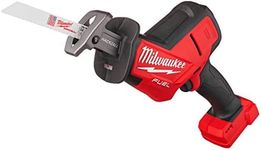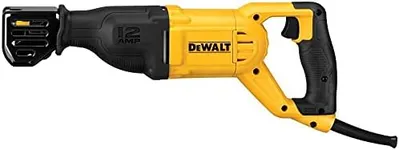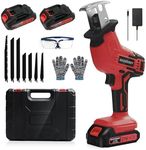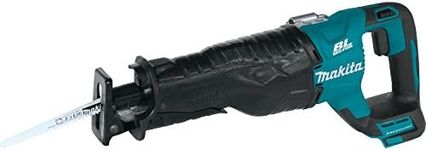Buying Guide for the Best Sawzalls
When it comes to picking the right sawzall, also known as a reciprocating saw, it's important to consider the specific tasks you'll be using it for. Sawzalls are versatile tools that can cut through a variety of materials, including wood, metal, and plastic. Understanding the key specifications will help you choose a sawzall that meets your needs and ensures efficient and effective performance. Here are the key specs to consider and how to navigate them to find the best fit for you.Power SourceSawzalls can be either corded or cordless. Corded sawzalls are typically more powerful and are ideal for heavy-duty tasks and continuous use, as they don't rely on battery life. Cordless sawzalls offer greater mobility and convenience, making them suitable for jobs where access to power outlets is limited. If you need a sawzall for extended periods of use or heavy-duty cutting, a corded model might be best. For occasional use or jobs that require portability, a cordless model would be more appropriate.
Motor PowerMotor power in sawzalls is measured in amps for corded models and volts for cordless models. Higher amp or volt ratings generally indicate more powerful motors, which can handle tougher materials and more demanding tasks. For light to medium-duty tasks, a sawzall with a motor power of around 7-10 amps (corded) or 18-20 volts (cordless) should suffice. For heavy-duty tasks, look for models with higher ratings, such as 11-15 amps or 21-60 volts.
Stroke LengthStroke length refers to the distance the blade travels in one complete cycle. Longer stroke lengths allow for faster cutting and are better suited for cutting through thicker materials. Common stroke lengths range from 1/2 inch to 1-1/4 inches. For general-purpose use, a stroke length of around 1 inch is usually sufficient. If you need to cut through thicker materials or want faster cutting speeds, opt for a sawzall with a longer stroke length.
Strokes Per Minute (SPM)Strokes per minute (SPM) measures how many times the blade moves back and forth in one minute. Higher SPM ratings mean faster cutting speeds. Most sawzalls offer variable speed settings, allowing you to adjust the SPM based on the material you're cutting. For general use, an SPM range of 0-3,000 is common. If you need more control and precision, look for models with variable speed settings that allow you to adjust the SPM to match the task at hand.
Weight and ErgonomicsThe weight and ergonomics of a sawzall can significantly impact user comfort and ease of use. Lighter models are easier to handle and reduce fatigue during extended use, while heavier models may offer more stability and control. Ergonomic features such as comfortable grips, anti-vibration technology, and balanced designs can enhance user comfort. Consider how long you'll be using the sawzall and choose a model that feels comfortable and manageable for you.
Blade Change MechanismThe blade change mechanism determines how easy it is to replace the blade. Tool-free blade change systems allow you to quickly and easily swap out blades without the need for additional tools, saving time and effort. This feature is especially useful if you frequently switch between different types of blades for various tasks. If convenience and efficiency are important to you, look for a sawzall with a tool-free blade change mechanism.
Orbital ActionOrbital action refers to the elliptical motion of the blade, which can enhance cutting efficiency and speed, especially in wood. Sawzalls with orbital action settings allow you to switch between straight and orbital cutting modes. For general-purpose cutting, straight action is usually sufficient. If you need to cut through wood quickly and efficiently, a sawzall with orbital action capabilities can be beneficial.





















